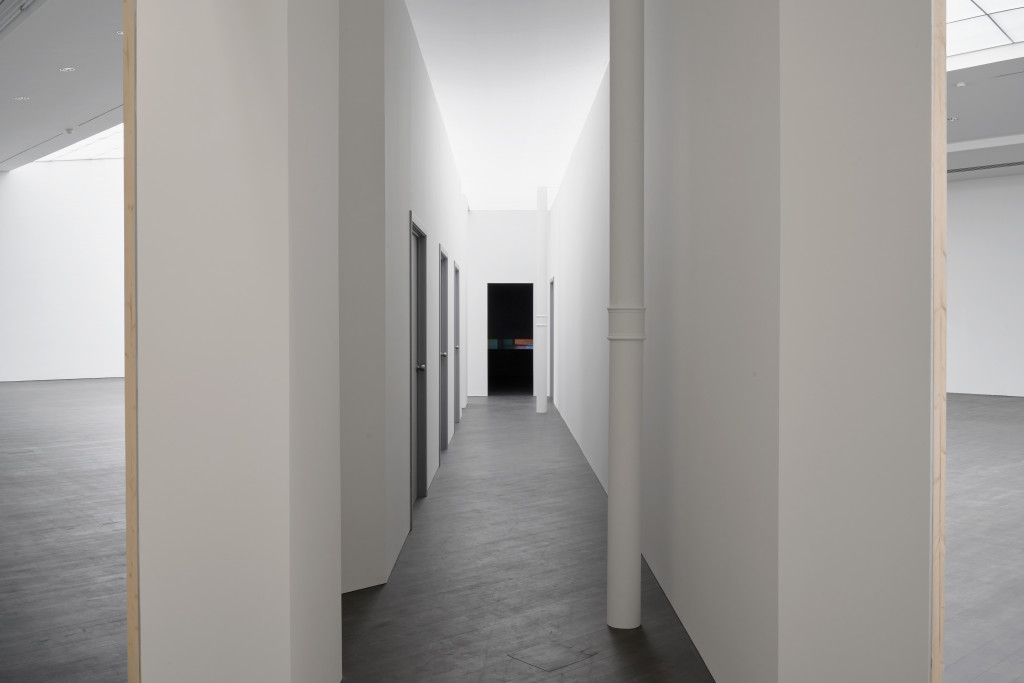
Type: Exhibition
Source: Future Sun
Annotator: Ingrid Schaffner
Sequence: 1 of 16
Year annotated: 2020
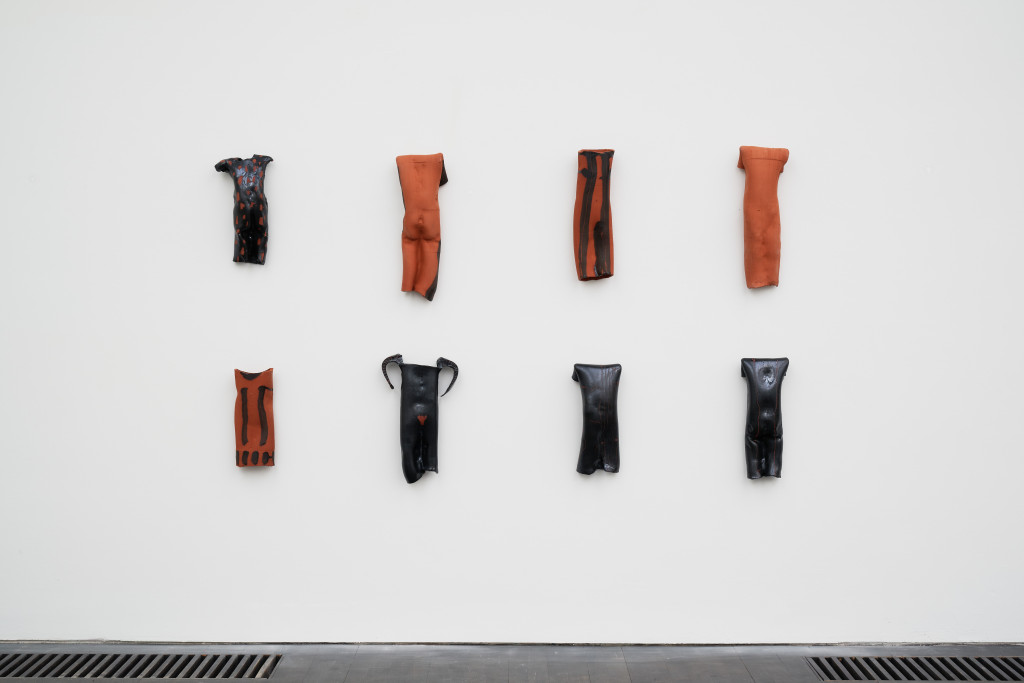
Type: Exhibition
Source: Future Sun
Annotator: Ingrid Schaffner
Sequence: 2 of 16
Year annotated: 2020
Like any museum, this one can be explored however curiosity leads you. However, I like to begin with some of the archeological treasures. Just down this hallway is a unique collection of Greek Red and Black Attic Ware. The original purpose of these ceramics is today a mystery, but it wasn’t unusual for specific shapes to have dedicated functions for daily use or ritual.
Those sure look like loutrophoroi to me.
I beg your pardon?
You know, tall necked jars with handles for carrying water.
I personally see more of a combination krater/kouroi/caryatid—sort of animating the effects inside the kiln that color the clay in the firing process. As if the vessels were breathing in air and smoke.
The artist refers to these objects as time travelers…
Who’s Nicholas Hammond?
A classical scholar and Cambridge don, why do you ask?
His name was on one of the doors we just passed by.
Ah. Well since you asked, Nicholas Hammond was one of the discovers—along with the Greek archeologist Manolis Andronikes—of the tomb of Philip II of Macedon, the father of Alexander the Great. He wrote a textbook classical greek history and published profusely on all things Macedonian from agricultural economy to coinage and insignia. He knew his field from the ground up — having spent the 1930s as a student taking epic walks around Northern Greece and Albania. Hammond celebrated his 80th birthday by taking his children and grandchildren—including a young Lucy Skaer—to Athens where he was celebrated as a scholar and hero of the Greek resistance during WWII.
I read that on a mission to Thessaloniki, Hammond was so effectively undercover as a local shepherd that someone asked him for advice on making cheese.
Did anyone happen to notice if there’s a cafe in this museum?
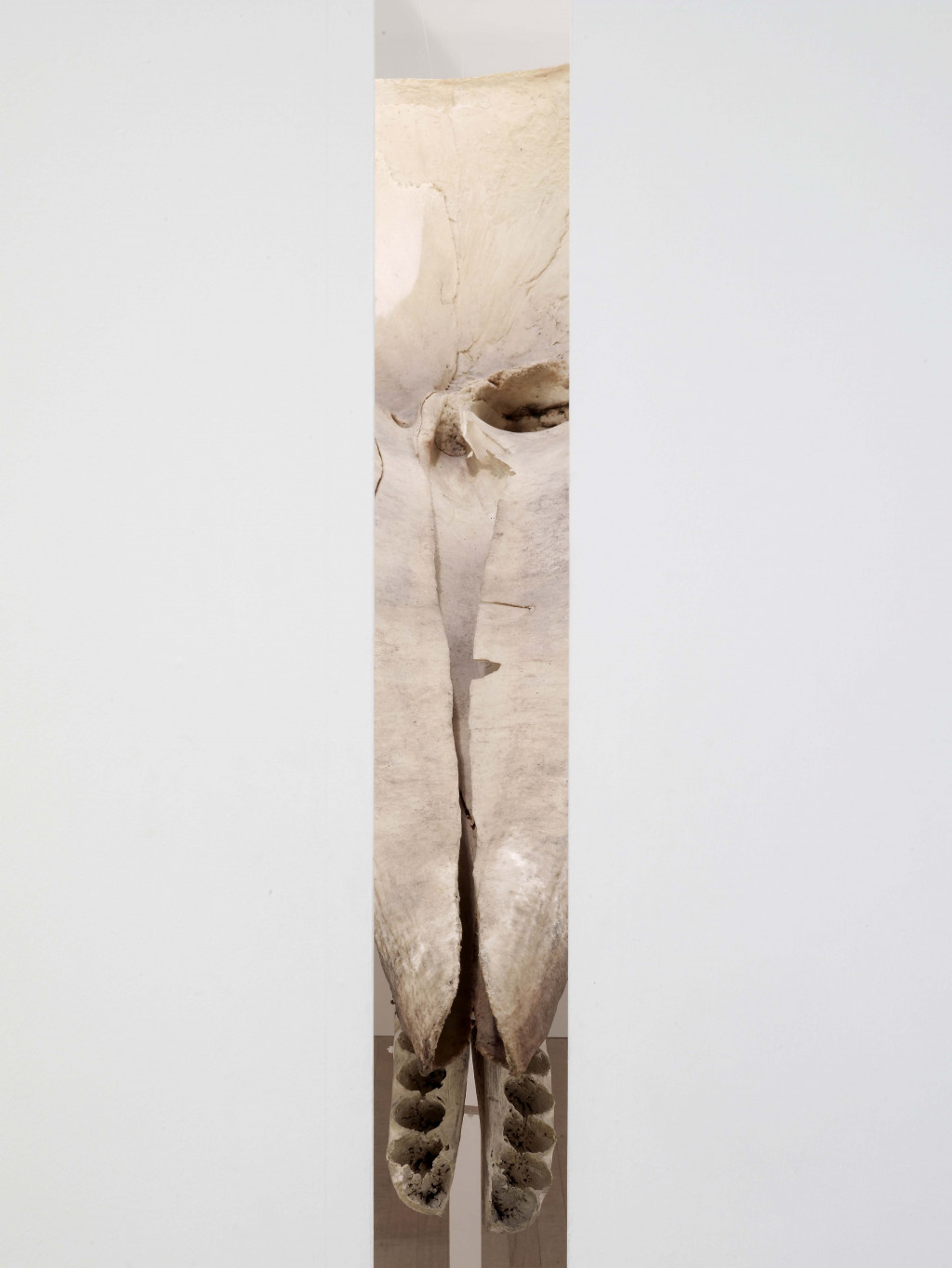
Type: Exhibition
Source: Thames and Hudson
Annotator: Ingrid Schaffner
Sequence: 3 of 16
Year annotated: 2020
The Natural History holdings of the Museum of Lucy Skaer are vast. Here is an entire whale skeleton.
Where? I don’t see.
Well, it can see you. It’s behind that partitioned wall. You have to keep moving and looking through the partitions—as if your whole body was a foot-pedaled zoetrope. This whale is like a big idea: it’s is nearly incomprehensible. You can only grasp it one sliver at a time. It’s actually a Sperm whale on loan from the Museum of Scotland. And that may not be it’s eye, maybe that’s its blowhole.
Is there an elephant in the next room?
No, a dolphin — and it’s completely allusive. But if you know the publisher’s insignia for Thames and Hudson—which is the name of this exhibit—you should be able to see it.
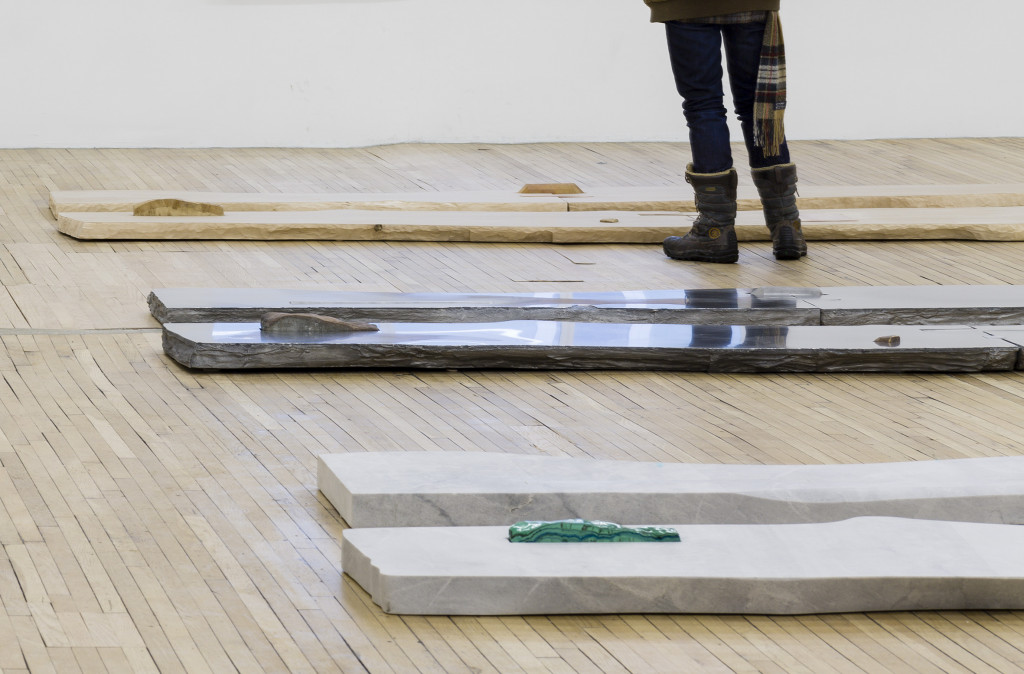
Type: Exhibition
Source: Sticks and Stones
Annotator: Ingrid Schaffner
Sequence: 4 of 16
Year annotated: 2020
The Hall of Minerals is also extensive. Specimens are deposited everywhere you look. There are chunks of malachite in the floor boards,
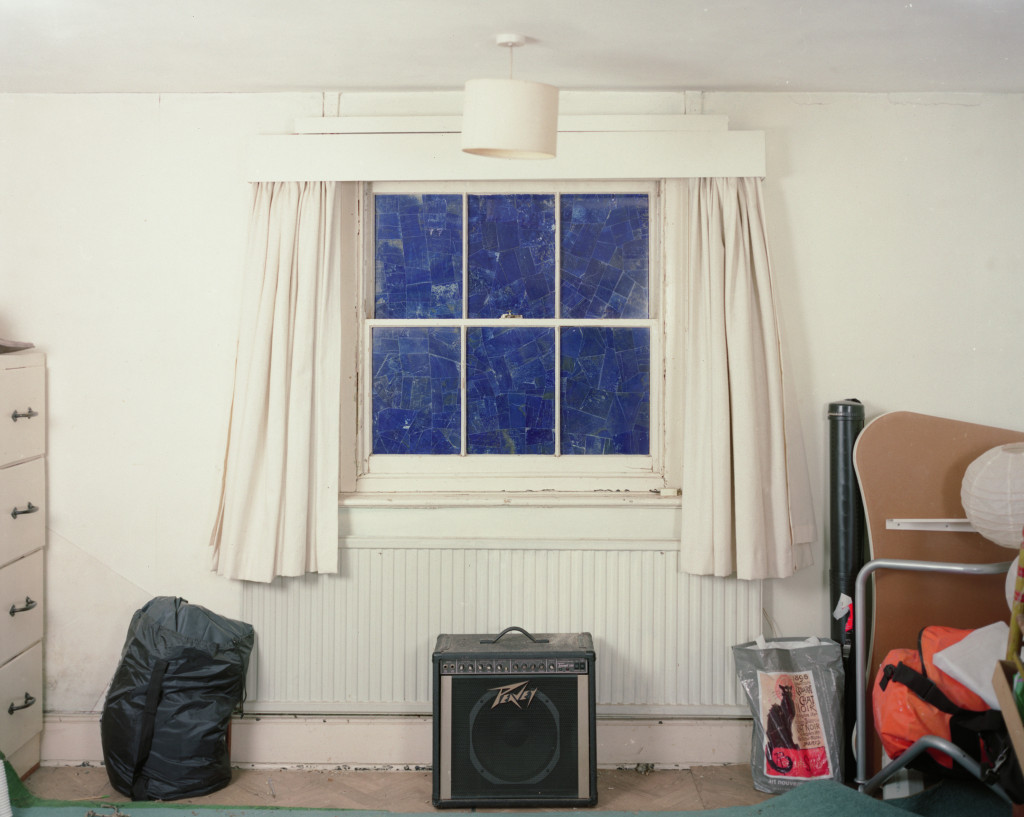
Type: Exhibition
Source: Una Casa Más Pequena
Annotator: Ingrid Schaffner
Sequence: 5 of 16
Year annotated: 2020
Lapis lazuli in the window frames,
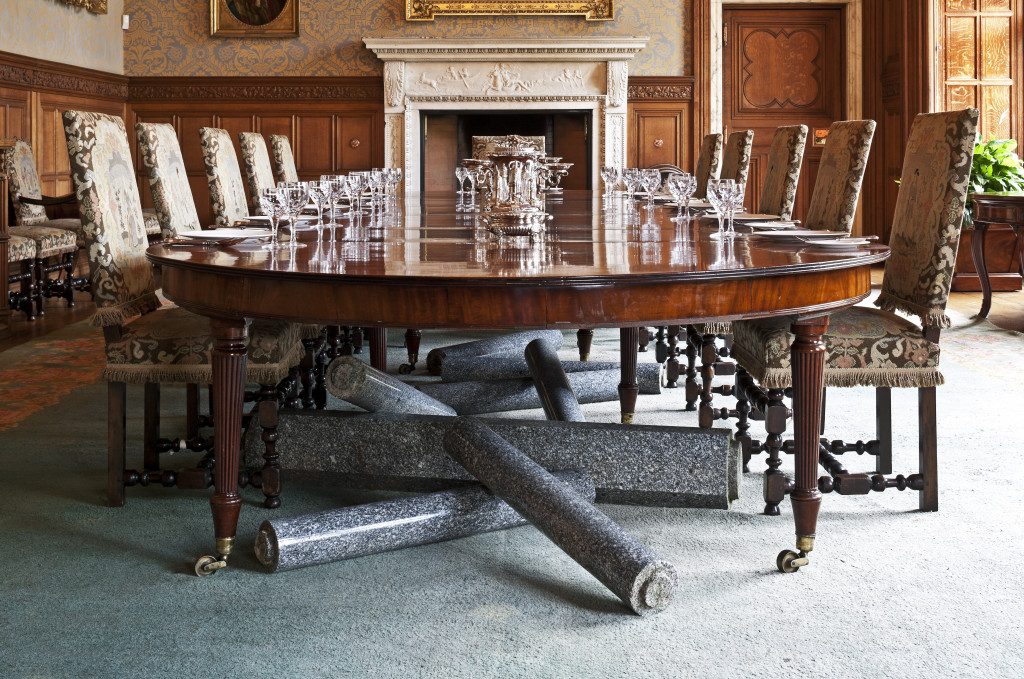
Type: Exhibition
Source: A proposal for Mount Stuart
Annotator: Ingrid Schaffner
Sequence: 6 of 16
Year annotated: 2020
And, in one of the period rooms, there are pillars of granite stowed under a table, like surplus firewood. This museum is carrying more ballast than a ship.
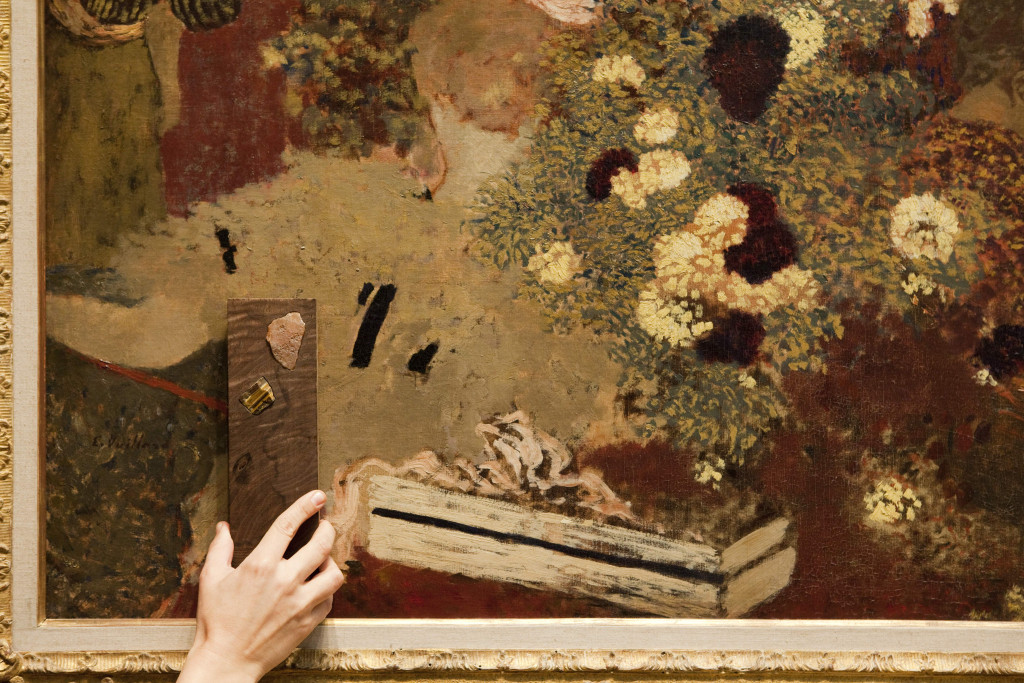
Type: Work
Source: Us to Them
Annotator: Ingrid Schaffner
Sequence: 7 of 16
Year annotated: 2020
One especially unusual aspect of the collection I would like to bring to your attention is on view here in the Post-impressionist Painting Gallery, where minerals and gemstones are used to help in conservation. This is one of two great works by Edouard Vuillard held by the museum: The Album from 1895.
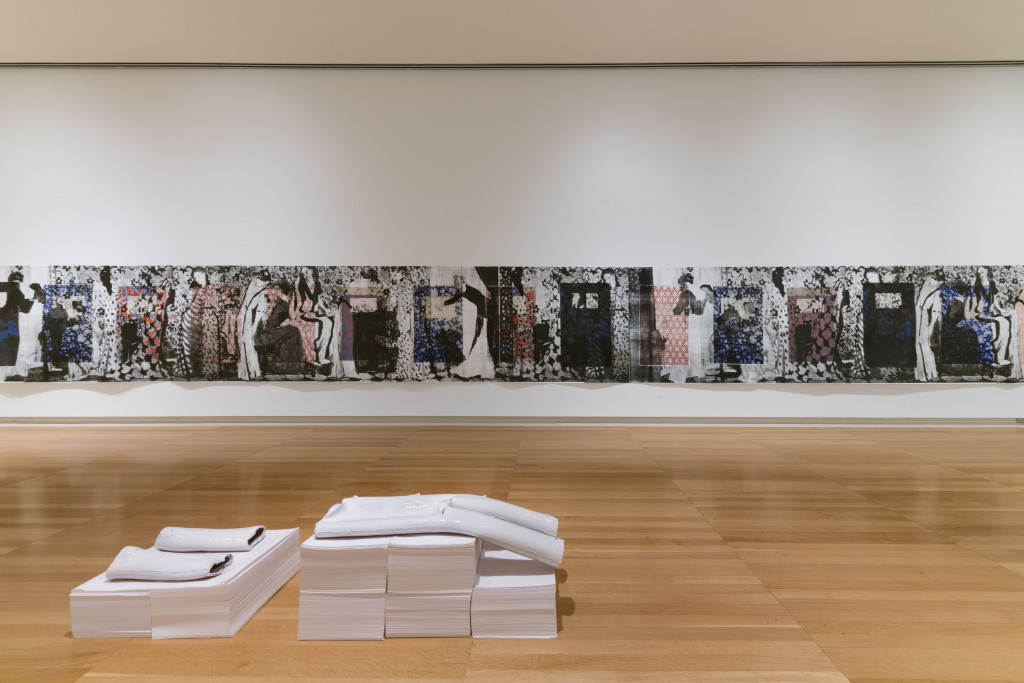
Type: Exhibition
Source: Carnegie International 57
Annotator: Ingrid Schaffner
Sequence: 8 of 16
Year annotated: 2020
The other is on view in Rare Books and Prints, where it mingles with Hogarth Press first editions, handprinted by Virginia and Leonard Woolf. I highly recommend visiting on your own time. If you’re lucky, you’ll catch another one of our museum docents Gertrude Stein; she can explain everything, including the medieval Pieta pieces on the floor.
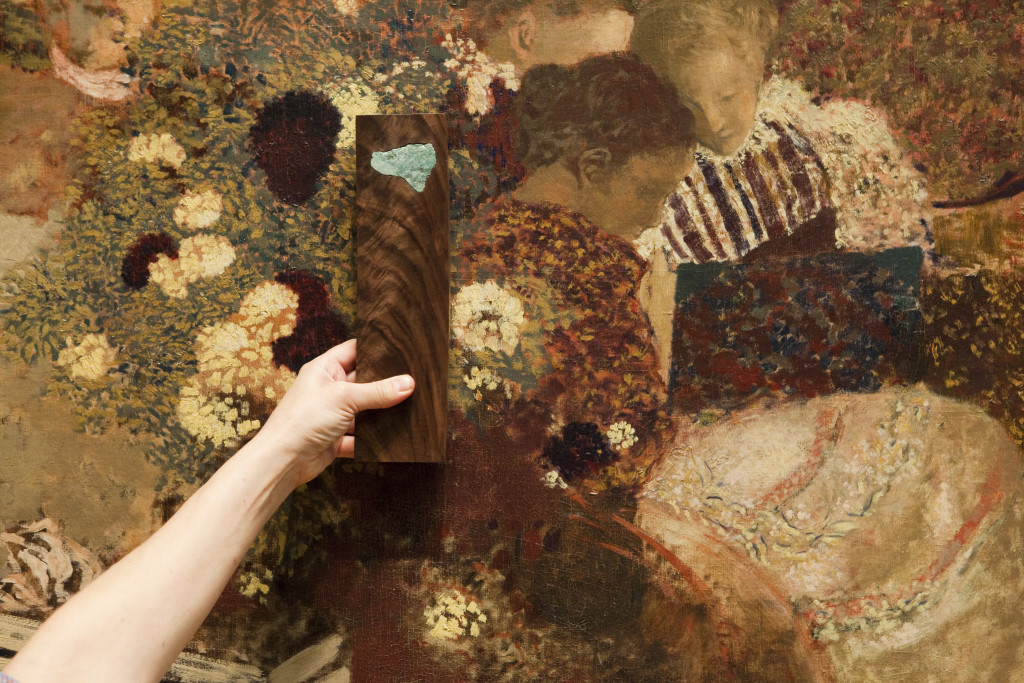
Type: Work
Source: Us to Them
Annotator: Ingrid Schaffner
Sequence: 9 of 16
Year annotated: 2020
Right now, we’re lucky to see our conservator in action: those stone wands she’s holding up are actually stabilizing the image. It’s an usual technique—not uncontroversial—but as I can see there are no questions, let’s move on to our final…
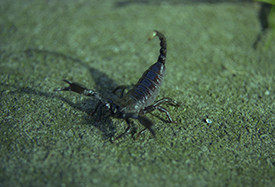
Type: Work
Source: Public Project (Scorpion / Diamond)
Annotator: Ingrid Schaffner
Sequence: 10 of 16
Year annotated: 2020
[Visitor screams]
Oh, there’s where you’ve got to! Don’t be alarmed folks. It’s just another work of art by Lucy Skaer. And not one everybody gets to see—even though it is a Public Project. In 2002, Skaer set this very scorpion and a small diamond side-by-side on a street in Amsterdam and just left them there. Can you believe that after all that time, they’re still together?
No. And I’ll tell you what else I can’t believe—that this bug with a chip was on the shortlist for the 2003 Beck’s Futures award! Twenty-four thousand pounds for an up-and-coming artist. What a purse!
Well I saw the exhibition of the nominees’s work at ICA London at the time, and I can tell you there was more to it than that. Skaer had created sort of a rumor that she had hidden exotic butterfly pupae around the Old Bailey with the plan that they would suddenly hatch and fill the courtroom with colorful beating wings. I still have a beautiful poster give-away that was part of Skaer’s piece: a photograph of a chrysalis in the palm of her hand.
You know who won the purse/prize? Rosalind Nashashibi for The State of Things. Four dreamy and discordant films. One in particular I remember seeing of a Glasgow jumble sale while hearing an Egyptian song.
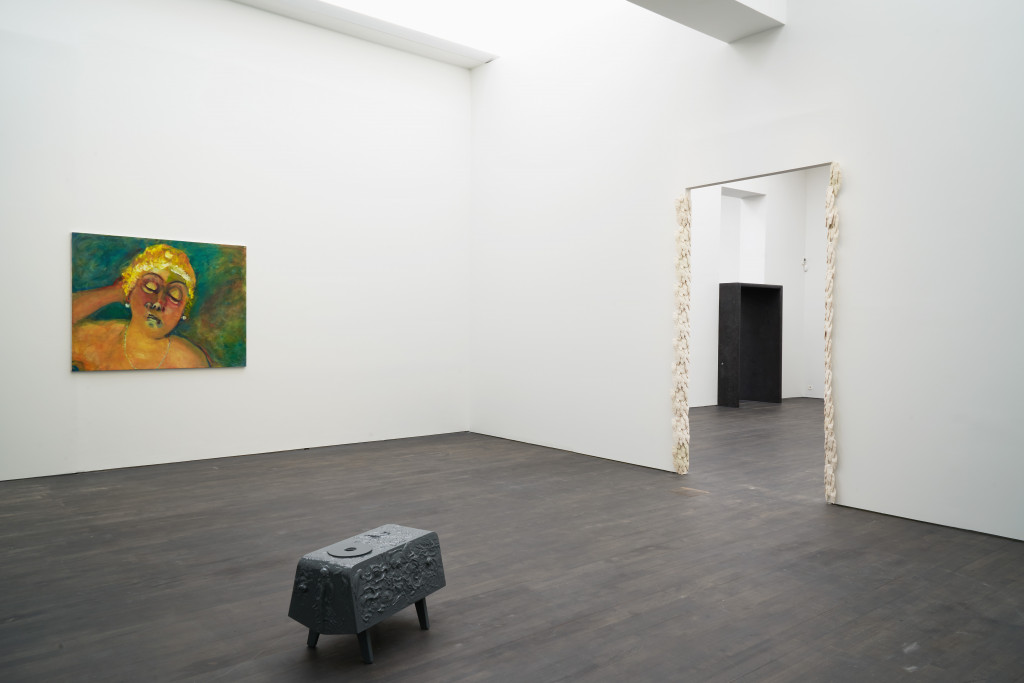
Type: Exhibition
Source: Future Sun
Annotator: Ingrid Schaffner
Sequence: 11 of 16
Year annotated: 2020
I wonder if that’s how she and Lucy met? I know some of Rosalind’s paintings are here at the museum and there’s a film I love that the two artists made together in Tahiti of women and girls—way after Gauguin, through a feminist gaze. You can practically smell the flowers in air and their hair, but I also seem to remember lots of getting in and out of cars.
In any case, that film is not currently on view at the museum. So let’s press on to our last tour stop. I have a surprise for our group.
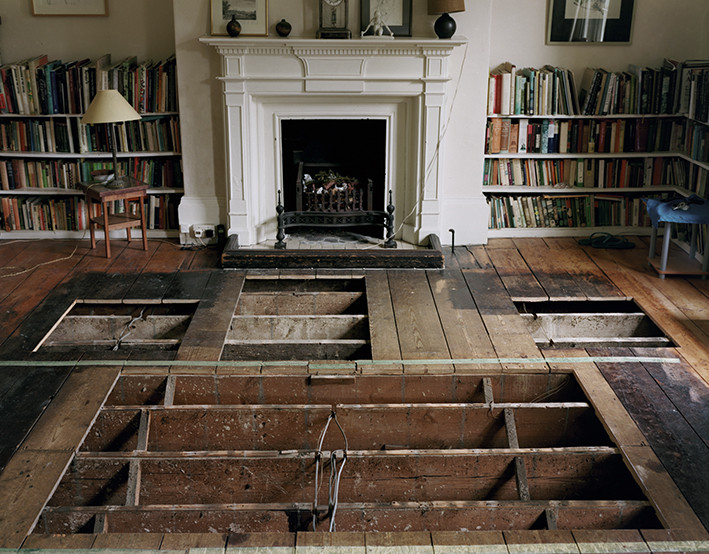
Type: Work
Source: Eccentric Boxes
Annotator: Ingrid Schaffner
Sequence: 12 of 16
Year annotated: 2020
Knowing how much joy I get from museums, I thought we would end deep. Now this is going to be a little dangerous. You can pick any one of the hatches in the floor. But please be very careful when you drop down through. Because they all lead to the same place…
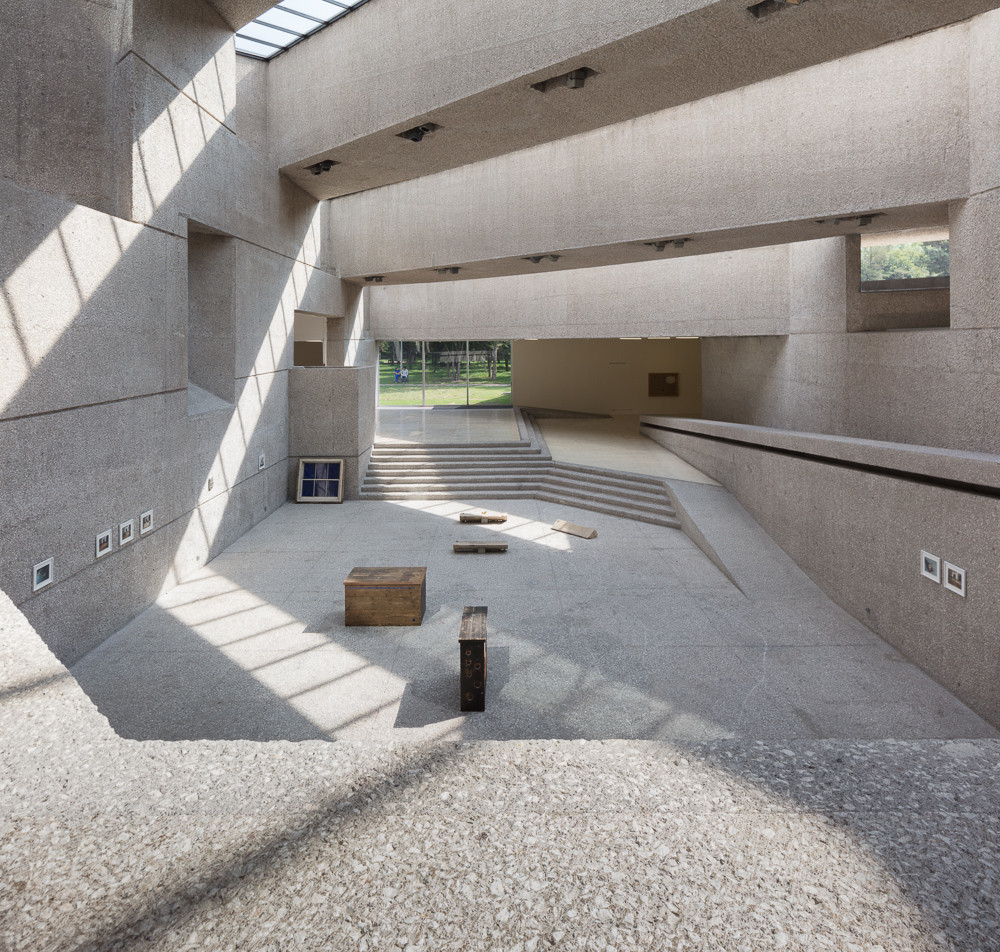
Type: Exhibition
Source: Una Casa Más Pequena
Annotator: Ingrid Schaffner
Sequence: 13 of 16
Year annotated: 2020
Storage. This is where everything ends up—the pictures, the sculptures, even Skaer’s films are here in this vault.
But where were we just standing? Before you made us practically break our necks to get here, what was that room?
You mean the gallery with the holes in the floor? That is the Museum of Lucy Skaer Annex. The artist likes to say that’s where she had first her first cultural experiences, amidst the books, papers, pottery, paintings and collections of coins and stamps. Her father actually lives there. Does any one want to guess what those crates are made of?
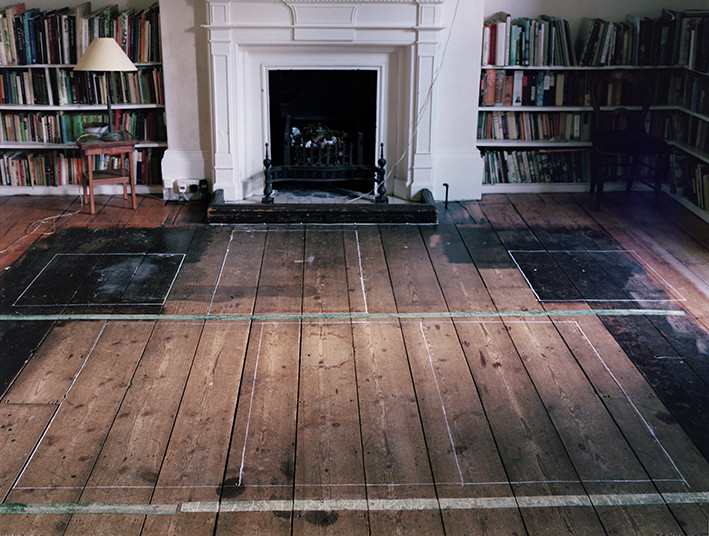
Type: Work
Source: Eccentric Boxes
Annotator: Ingrid Schaffner
Sequence: 14 of 16
Year annotated: 2020
The Annex, obviously. The crates are made from the cuts in the floor. It seems sort of reckless of his daughter to chop up her father’s house.
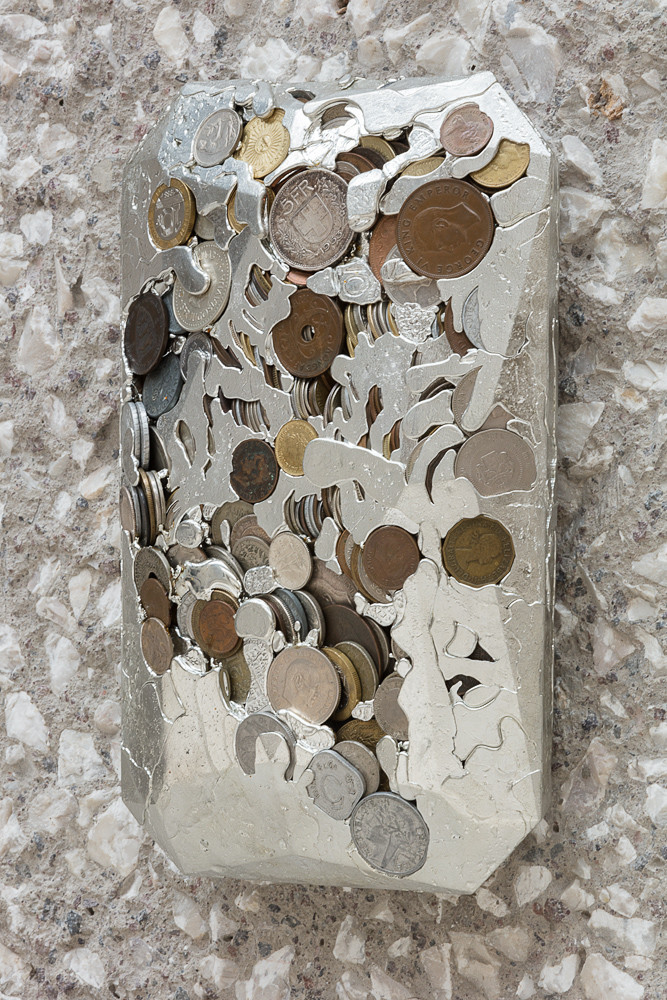
Type: Exhibition
Source: Una Casa Más Pequena
Annotator: Ingrid Schaffner
Sequence: 15 of 16
Year annotated: 2020
I hear she also melted down his coin collection to make it into a shape like a hand-cut precious stone.
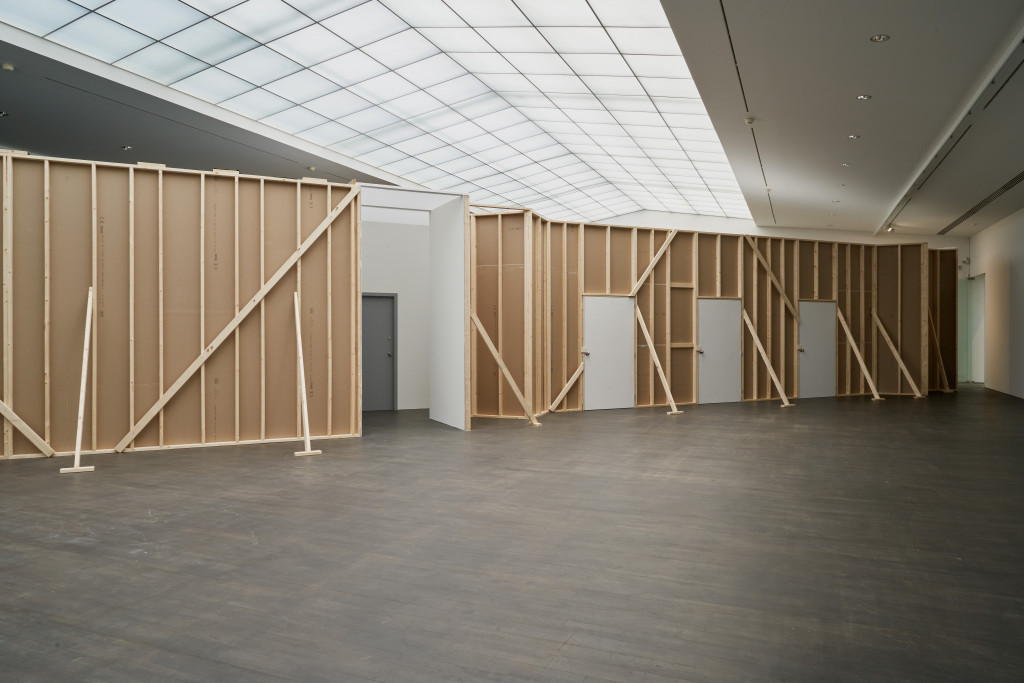
Type: Exhibition
Source: Future Sun
Annotator: Ingrid Schaffner
Sequence: 16 of 16
Year annotated: 2020
Well, that’s what Lucy Skaer does—she turns things into other things. She makes abstractions concrete. She transmutes. I’m sure her parents are plenty used to having their daughter morph around the house. And now that we find ourselves in the back of the beginning, this seems like a good place to end our tour. Thank you for your time and attention; please feel free to continue to explore the museum on your own.
Welcome to the Museum of Lucy Skaer. I’m your docent and I trust if you’ve made it this far, you’re already somewhat familiar with Lucy Skaer and her achievements.
She’s a British artist.
That’s right
Born in Cambridge, studied at Glasgow School of Art in an interdisciplinary Environmental Arts Program.
Correct!
She had a studio in New York for a spell, then moved back to Glasgow.
My, this group does know a lot about Lucy Skaer.
We bump into her at the cheesemonger, Mellis’s, pretty often.
I hear she just got a puppy. So many people are getting pets during this pandemic.
Did you know that Lucy Skaer shares a birthday with the Slovenian geologist Anton Melik? The school of geomorphology named for him in Ljubljana used to be the place to study glaciers and fluvial transformations.
Same birthday too as William Clowes. He industrialized printing with steam-powered presses and was big guy in the Society for the Diffusion of Useful Knowledge.
Didn’t Thoreau suggest a Society for the Diffusion of Useful Ignorance in his treatise on Walking? I believe Emerson was also involved in…
Thank you. Right. Let’s move on, please.